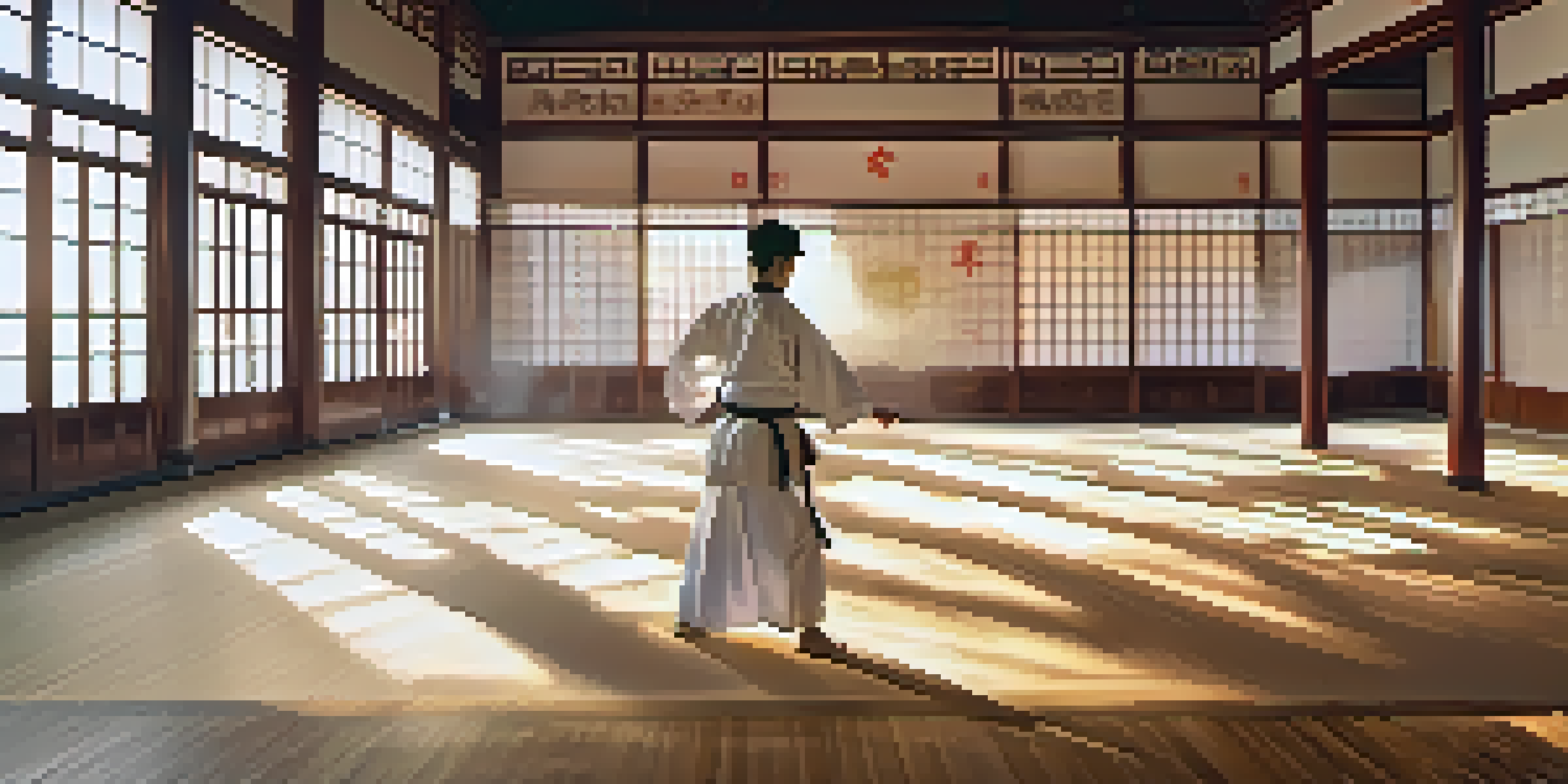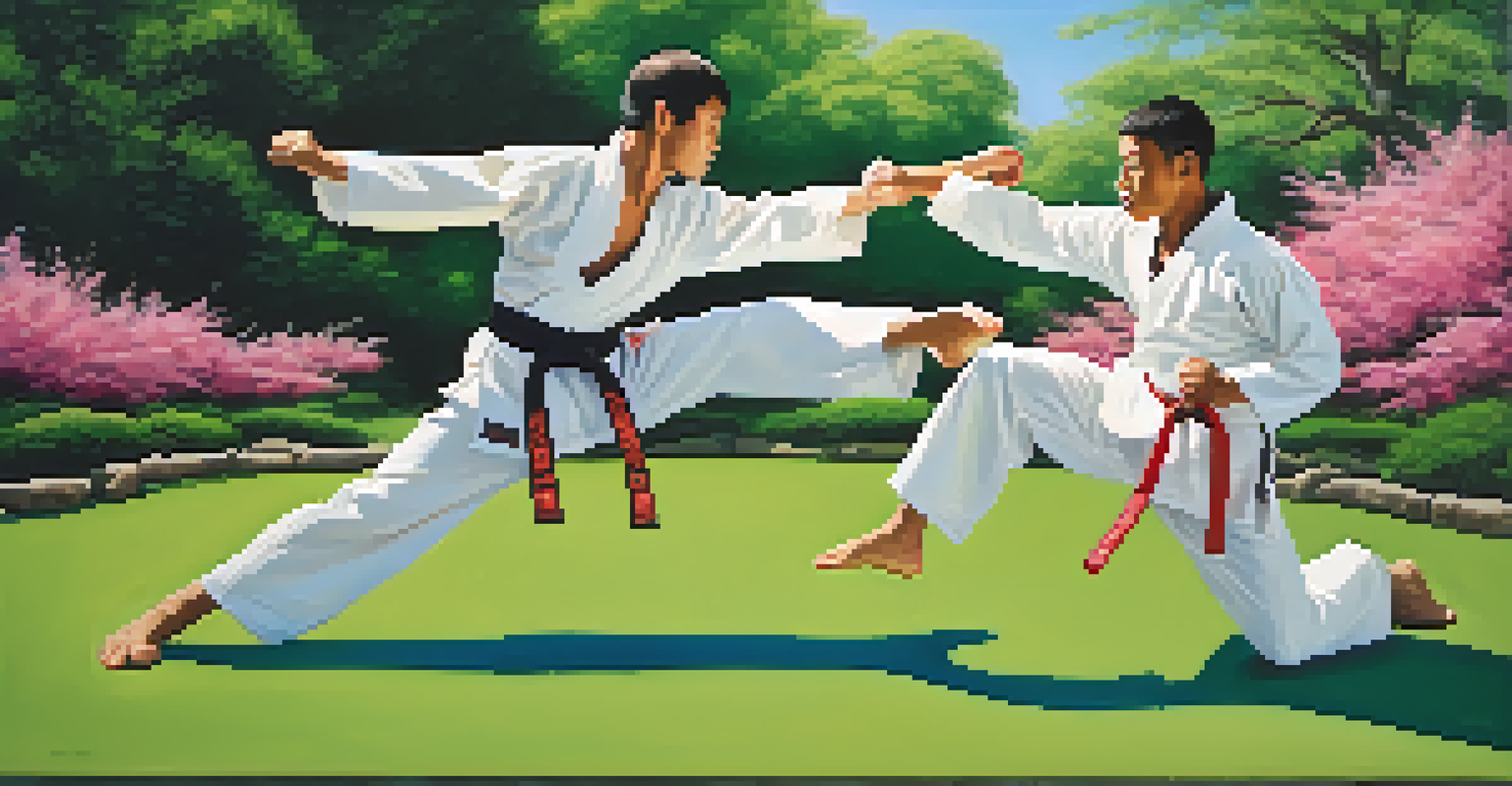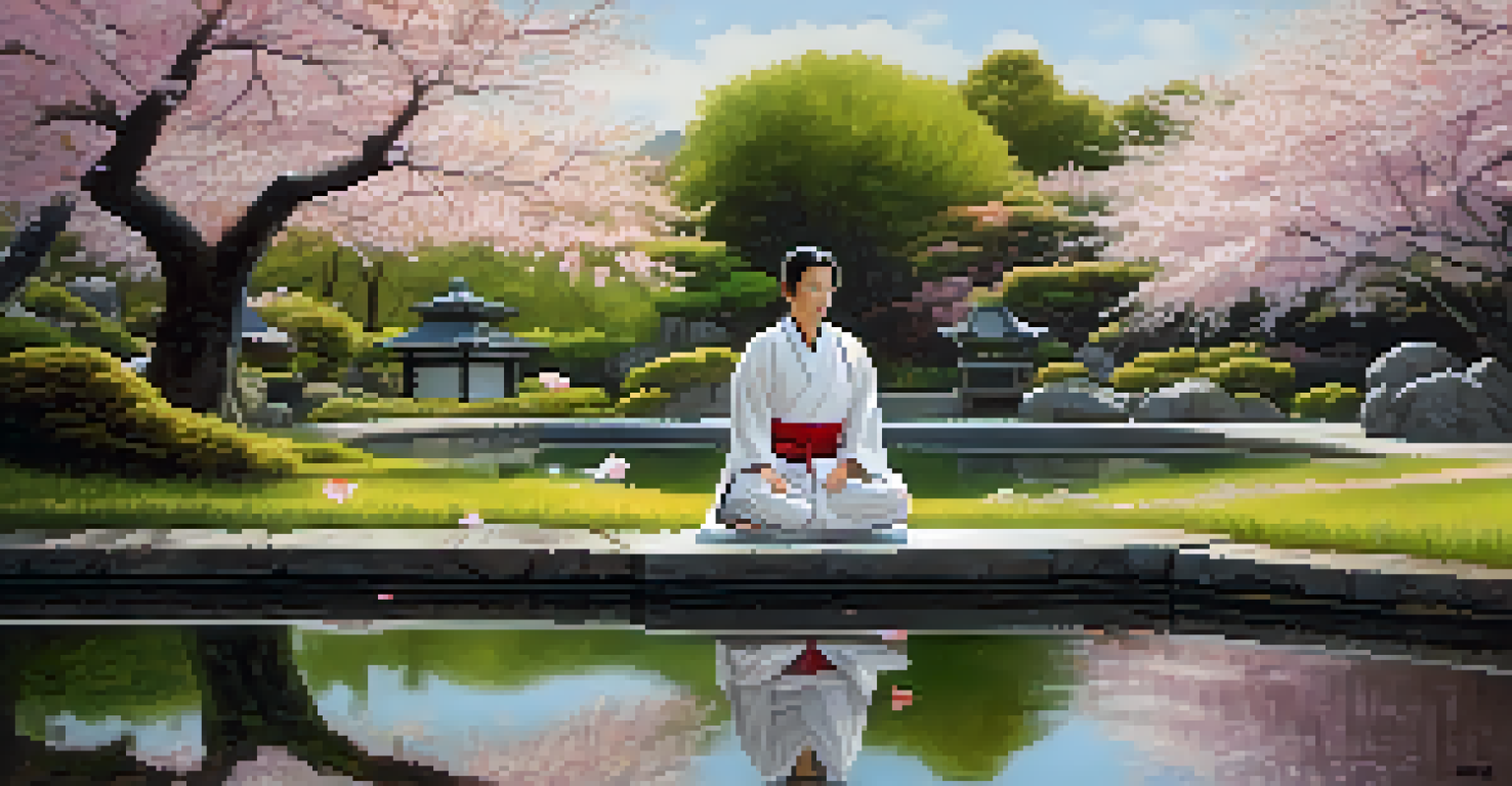Conflict Management: Lessons Learned from Martial Arts Training

Understanding Conflict: The Martial Arts Perspective
Conflict often arises from misunderstanding or miscommunication, much like the initial sparring sessions in martial arts where both parties are learning each other's moves. Understanding the root cause of conflict is crucial in both martial arts and everyday life. By recognizing that conflict is a natural part of interaction, we can approach it with a mindset of learning rather than aggression. This perspective fosters a more constructive dialogue, allowing for better resolutions.
The greatest weapon against stress is our ability to choose one thought over another.
In martial arts, practitioners learn to anticipate their opponent's moves. Similarly, in conflict management, being aware of others' perspectives can help de-escalate tensions. This awareness allows for proactive strategies that can prevent conflicts before they escalate. Just as a martial artist practices their techniques, honing our skills in empathy and communication can lead to more harmonious interactions.
Ultimately, embracing conflict as a learning opportunity, rather than a negative experience, can transform the way we handle disputes. This shift in mindset encourages us to seek understanding and solutions rather than simply winning an argument. It's about finding a balance, much like in martial arts where the goal is not to dominate but to improve oneself while respecting others.
The Importance of Calmness in Conflict Resolution
A core principle in martial arts is maintaining composure under pressure. This calmness is essential when dealing with conflicts, as it helps us think clearly and respond effectively. When emotions run high, it's easy to react impulsively rather than thoughtfully. By practicing mindfulness techniques, like those used in martial arts, we can cultivate a sense of calm that allows for better decision-making.

In a heated discussion, taking a step back to breathe and assess the situation can make all the difference. Just like a martial artist pauses to read their opponent's movements, we can benefit from pausing to reflect on our response. This approach not only de-escalates the situation but also signals to others that we are in control and open to dialogue.
Conflict as Learning Opportunity
Embracing conflict as a chance to learn fosters understanding and constructive dialogue.
Furthermore, remaining calm can influence the emotional tone of the conversation. When one party stays composed, it often encourages the other to do the same. This ripple effect can transform a potentially volatile situation into a collaborative problem-solving session, much like how a practiced martial artist can turn a fierce confrontation into a graceful exchange.
Active Listening: A Key Skill from Martial Arts
Active listening is a skill that martial artists use to gauge their opponent's intentions and movements. This concept is equally applicable in conflict management, as truly hearing what others say can lead to more meaningful resolutions. By focusing intently on the speaker, we can better understand their concerns and feelings, which is crucial for resolving disputes effectively.
In the middle of difficulty lies opportunity.
In martial arts, practitioners often repeat their opponents' moves to learn and adapt. Similarly, we can paraphrase or summarize what others say to show that we are engaged and to clarify any misunderstandings. This not only helps in building rapport but also reinforces the idea that both parties are working towards a common goal—resolution and understanding.
Moreover, active listening fosters a sense of respect and validation. When people feel heard, they are more likely to be open to compromise and collaboration. Just as in martial arts where respect for opponents fosters a healthy training environment, demonstrating respect in conversations can lead to a more productive conflict resolution process.
Adaptability: Learning to Pivot in Conflicts
Martial arts training emphasizes the importance of adaptability; practitioners learn to adjust their strategies based on their opponent's actions. This flexibility is invaluable in conflict management, where rigid stances can lead to stalemates. By being open to changing our approach, we can find new pathways to resolution that might not have been initially considered.
For instance, if a particular strategy isn't working in a negotiation, being willing to pivot and try a different angle can open up possibilities. This willingness to adapt mirrors the tactics used in martial arts, where the ability to improvise can lead to unexpected victories. Embracing change in our conflict resolution strategies can often yield better outcomes.
Calmness Enhances Resolution
Maintaining composure during conflicts leads to clearer thinking and more effective responses.
Additionally, adaptability encourages creativity in problem-solving. Instead of getting stuck on one solution, we can explore various options, much like a martial artist exploring different techniques. This creative approach not only helps in finding effective solutions but also fosters a collaborative spirit where all parties feel valued and involved.
Respect and Honor: Cornerstones of Conflict Management
In martial arts, respect for instructors, peers, and the discipline itself is paramount. This principle translates seamlessly into conflict management, where mutual respect can significantly influence the outcome of disputes. When we approach conflicts with respect for others' viewpoints, we create an environment conducive to understanding and resolution.
Respecting others during conflicts involves recognizing their feelings and perspectives, even if we disagree. Just as martial artists bow to each other as a sign of respect, we can acknowledge the validity of others' emotions during disagreements. This acknowledgment helps to reduce defensiveness and opens the door to constructive dialogue.
Moreover, fostering a culture of respect sets a positive precedent for future interactions. When we model respectful behavior in conflicts, it encourages others to do the same, creating a ripple effect that benefits everyone involved. Just like in martial arts, where respect enhances the training experience, it enriches our interpersonal relationships and leads to healthier, more productive outcomes.
The Role of Discipline in Managing Conflicts
Discipline is a fundamental aspect of martial arts training, teaching practitioners to remain focused and committed to their goals. Similarly, in conflict management, discipline helps us stick to our principles and maintain a respectful approach, even in challenging situations. This level of commitment can be the difference between a constructive resolution and a destructive argument.
Practicing discipline means setting boundaries and adhering to them during conflicts. It involves knowing when to engage and when to step back, much like a martial artist knows when to strike and when to defend. This self-control leads to more thoughtful interactions and prevents escalation into unproductive confrontations.
Respect Fosters Healthy Dialogue
Approaching conflicts with mutual respect creates an environment conducive to understanding and resolution.
Additionally, discipline fosters resilience. Conflicts can be emotionally taxing, but a disciplined mindset helps us remain steadfast in our pursuit of resolution. By cultivating this resilience, we can navigate conflicts with grace, learning from each experience and becoming more adept at managing future disagreements.
The Power of Reflection: Learning Post-Conflict
After a sparring session, martial artists often reflect on what went well and what could be improved. This practice of reflection is equally important in conflict management, allowing us to analyze our responses and learn from our experiences. By taking the time to reflect, we can identify patterns in our behavior and adjust our strategies for future conflicts.
Reflecting on conflicts helps us understand our triggers and emotional responses. Just as a martial artist reviews their technique to enhance performance, we can examine our communication styles and emotional reactions to become more effective in handling disputes. This level of self-awareness is crucial for personal growth and better conflict resolution.

Moreover, sharing these reflections with others can deepen our understanding and foster stronger relationships. Discussing what we learned from a conflict not only promotes transparency but also encourages others to share their insights. By fostering a culture of reflection, we can create an environment where conflict is seen as an opportunity for growth rather than a setback.